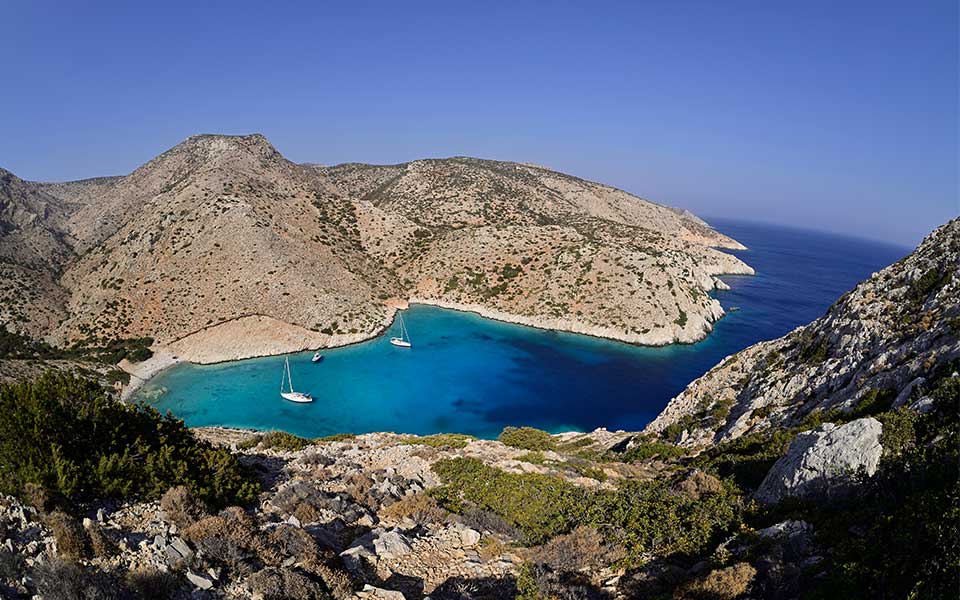The island
Keros and the islet of Daskalio to its west were once connected by an isthmus. However, rising sea levels separated them, dividing the island in two. Keros and Daskalio, along with the islands of Koufonisia, Schinoussa, Irakleia, Donoussa, and other small islets, comprise the Lesser Cyclades island complex, which is located between the larger islands of Amorgos to the east and Naxos to the northwest.
The time
Cycladic civilization emerged in the area during the Early Bronze Age, in the 3rd millennium BC. No written sources date from that era, making it difficult to determine how people lived, which gods they worshipped, and how their society was organized. Keros is an excellent example of a prehistoric mystery brimming with unexpected discoveries and intriguing theories.
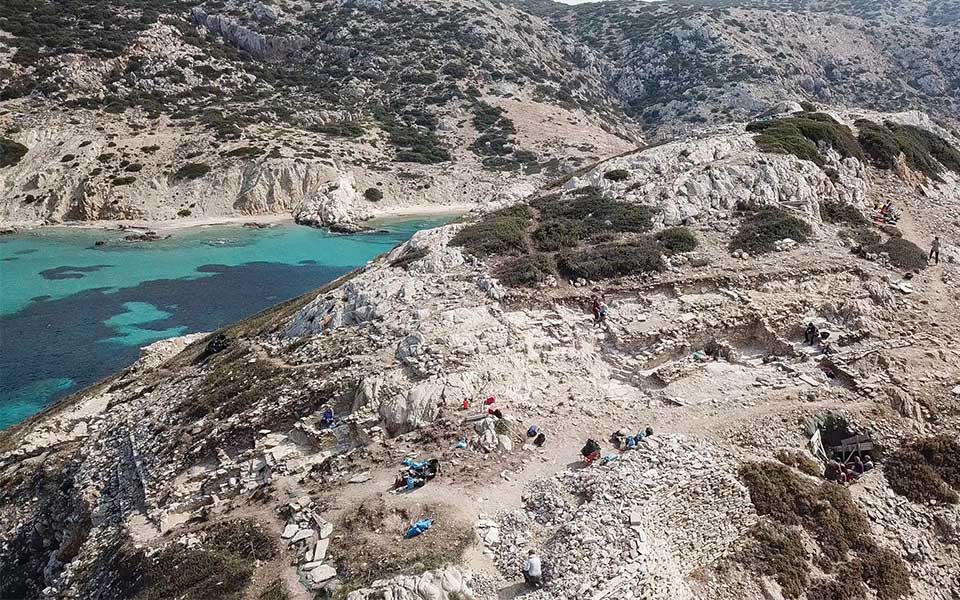
© Ministry of Culture
Looting and archeology
In the early 1960s, when Keros numbered only eight inhabitants,* extensive looting was discovered, particularly at the site of Kavos, on the western side of the island, opposite Daskalio. That’s when the Archaeological Service decided to get involved, launching what turned out to be a massive project that would last decades.
Christos Doumas and Colin Renfrew of the University of Cambridge are two archaeologists whose names are inextricably linked with Keros. The final phase of excavations on the island, known as the Keros Project, took place between 2015 and 2018.
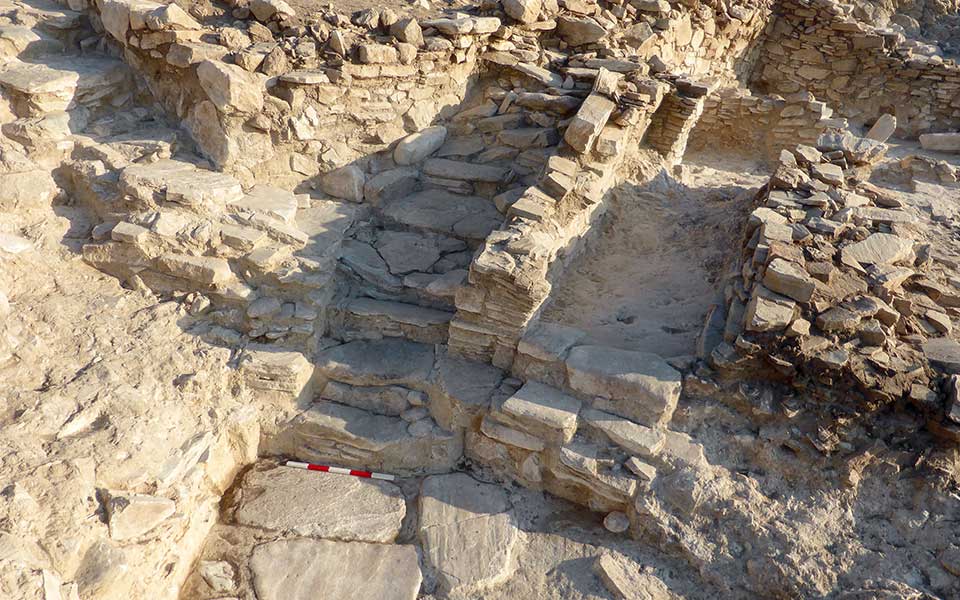
© Ministry of Culture
The finds
On Daskalio, a large settlement of about 0.13 hectares was discovered, built on terraces due to the island’s steep terrain and consisting of streets, houses, squares, meeting areas, and stairways. The settlement is an example of early urbanization, which was unprecedented at the time. The main building material was marble, which didn’t come from Keros – local marble was considered of inferior quality – but from Naxos, six nautical miles away. Tons of marble were transported by rowing ships, an arduous, ambitious undertaking that required resources, planning, and manpower. Among the most extraordinary finds at Daskalio are the numerous pebbles discovered in a 15-metre-long building.
At the same time that traces of an organized settlement were discovered on Daskalio, Keros unveiled its own unique treasures. In the site of Kavos, opposite Daskalio, the “Keros Hoard” was discovered: deposits containing large quantities of broken figurines and ceramics. Analysis of the material revealed that the objects did not come from Keros but from neighboring islands such as Naxos-Ios-Amorgos (the so-called “Keros triangle”), Milos, Thira, Tinos, and others.
The prevailing theory
The prevailing theory is that the people of prehistoric Cyclades would break figurines on various islands of the area, place the broken pieces in wooden – most likely – baskets, and transport them to the deposits on Keros. It is believed that they did this because the island was home to a pan-Cycladic sanctuary, possibly the first island sanctuary in the world. Another theory, which has since been abandoned, holds that the broken figurines were deposited on Keros because there was a cemetery there.
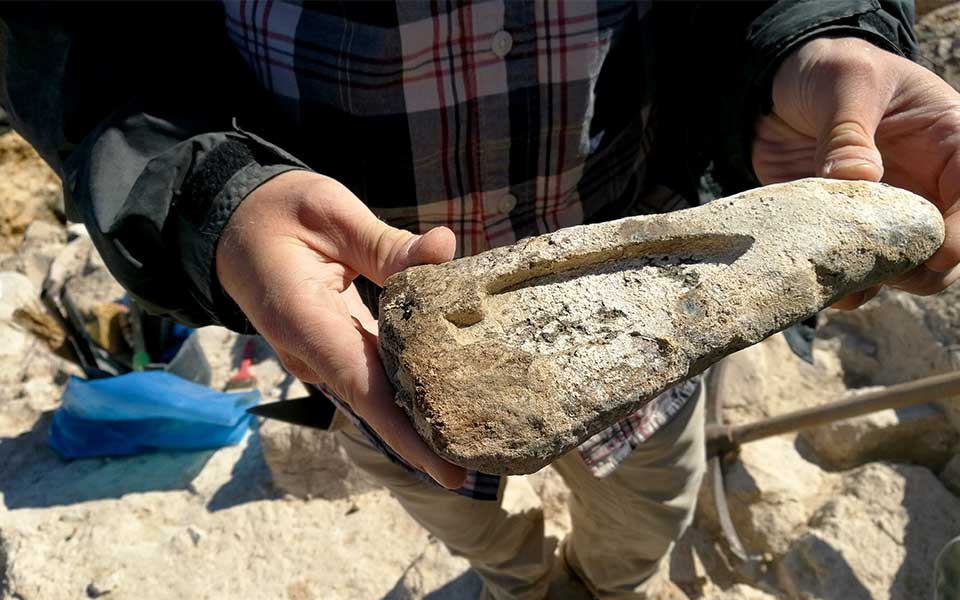
© Ministry of Culture
Metallurgy
Bellows and molds used to make metal objects were among the more interesting discoveries made during the excavation. Prehistoric Keros was regarded as a metallurgy center, making it an important island during the Bronze Age, when metallurgy was critical to the development of civilization. Keros and Daskalio had no mines, so metal was brought from other islands, such as Kythnos and Serifos, and processed on Keros. The industrial and commercial nature of the islands lends support to the theory of a pan-Cycladic sanctuary.
Access
Keros has rugged, rocky terrain, and access to the island is prohibited. When the necessary technical works are completed, the island will be open to visitors, beginning with specialists and progressing to the general public.
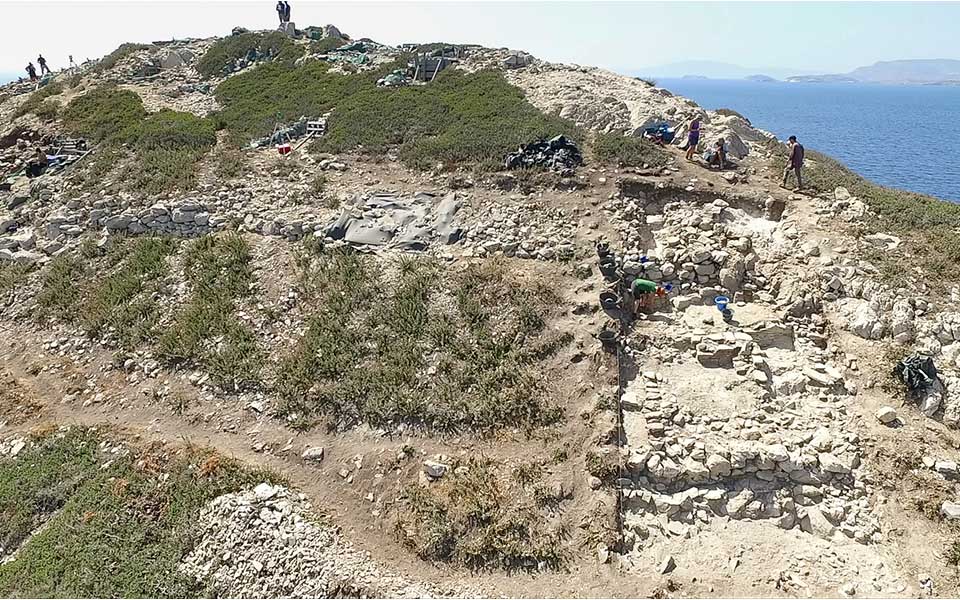
© Ministry of Culture
The future of the island
The Ephorate of Antiquities of Cyclades intends to return to Keros and Daskalio in 2025, along with the British School at Athens, to continue the research work that has been ongoing for the past 60 years. The project’s goal is to investigate not only prehistoric Keros, but also classical and medieval Keros, in order to gain a better understanding of how this area evolved over time. The fact that Keros and Daskalio are currently uninhabited is viewed as an advantage because the islands’ uninterrupted stratigraphy will provide researchers with a clear picture of their development. At the same time, another major archaeological project in the Cyclades, scheduled to be completed in 2027, is the establishment of museums in the Castle of Hora on the island of Naxos. The project will include three museums, one of which will be a Museum of Cycladic Civilization with exhibits from Keros. Until the project is completed, some of the Keros fragments will be on display at the Naxos Archaeological Museum.
The documentaries
If you enjoy the Aegean Sea and its archaeological mysteries, there are two documentaries about Keros. The first, “Keros: The Mystery of the Broken Figurines” (co-produced by COSMOTE TV and National Geographic and available to COSMOTE TV subscribers), offers an in-depth look at prehistoric Keros through interviews with scientists from various disciplines. The second, entitled “The Enigma of Keros” (available on the television platform ERTFLIX), includes, among other things, the invaluable testimony of Georgoula Prasinou, a Koufonisia resident who grew up on Keros and recalls seeing a looter (also known as “Uncle”) on the island as a child.
* From the book “Systematic Study of the Greek Islands, 1951-1981” by George K. Giagakis.
We would like to thank Dimitrios Athanasoulis, Director of the Ephorate of Antiquities of Cyclades, and Eirini Legaki, Archaeologist of the Ephorate of Antiquities of Cyclades and deputy director of the research program, for their information regarding the physiognomy, excavations, and future of Keros.

